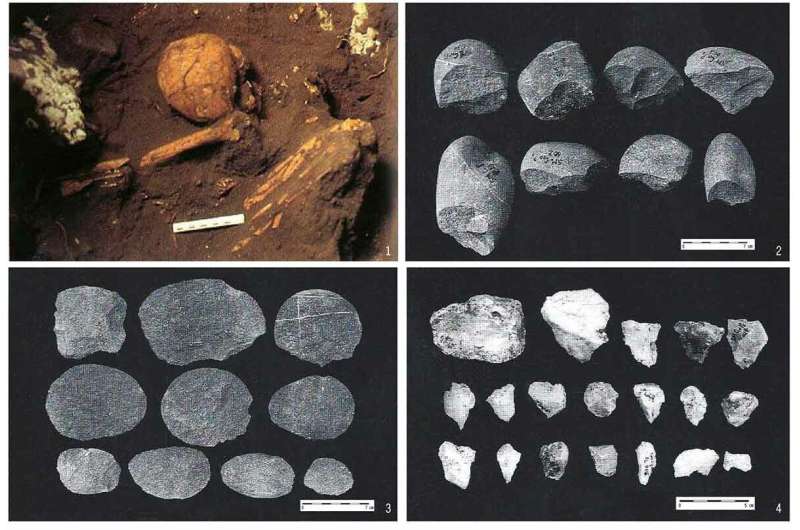by Bob Yirka , Phys.org

A team of researchers with members from Australia, Japan, Taiwan and Vietnam found a 6,000-year-old skull and femur bones in a cave in a mountainous part of Taiwan that might prove the existence of an ancient Indigenous tribe. In their paper published in the journal World Archaeology, the group describes the skull, where it was found and what it might represent.
In Taiwan, there have been stories passed down through the generations about a tribe of short, dark-skinned people that once lived in mountainous parts of the island. But until now, there has been no physical evidence of them. In this new effort, the researchers found a skull and leg bones in a cave that have been dated back to approximately 6,000 years ago—a time before the ancestors of people alive on the island arrived.
In studying DNA from the skull, the researchers found it close to African samples from around the same time period. But they also found that its size and shape resemble that of Negritos, who lived in parts of what is now South Africa and in the Philippines. Study of bones left behind in those areas showed them to be quite short with a small body size. Femur bones found near the skull were from the same person as the skull, a young woman. The researchers estimate she stood approximately 1.3 meters tall.
The researchers suggest their findings confirm the existence of the ancient people on Taiwan but they do not explain what might have happened to them. They were apparently gone by the time other early Austronesian groups of people began arriving. The researchers also note that mention of small, dark-skinned people was made in documents from the Quin Dynasty, and all but one of the 16 Austronesian groups living in Taiwan today have stories that describe small, dark-skinned people who once lived in the mountains. Such tales differ, however, between groups, the researchers note, with some believing that the earlier people were ancestors of theirs. Others see them as former enemies. One group claims to have killed off the last of the ancient people 1,000 years ago.
More information: Hsiao-chun Hung et al, Negritos in Taiwan and the wider prehistory of Southeast Asia: new discovery from the Xiaoma Caves, World Archaeology (2022).
DOI: 10.1080/00438243.2022.2121315© 2022 Science X Network
Citation: 6,000-year-old skull found in cave in Taiwan possibly confirms legend of Indigenous tribe (2022, October 10) retrieved 20 October 2022 from https://ift.tt/o41Xg9w
This document is subject to copyright. Apart from any fair dealing for the purpose of private study or research, no part may be reproduced without the written permission. The content is provided for information purposes only.
from Hacker News https://ift.tt/o41Xg9w
No comments:
Post a Comment
Note: Only a member of this blog may post a comment.